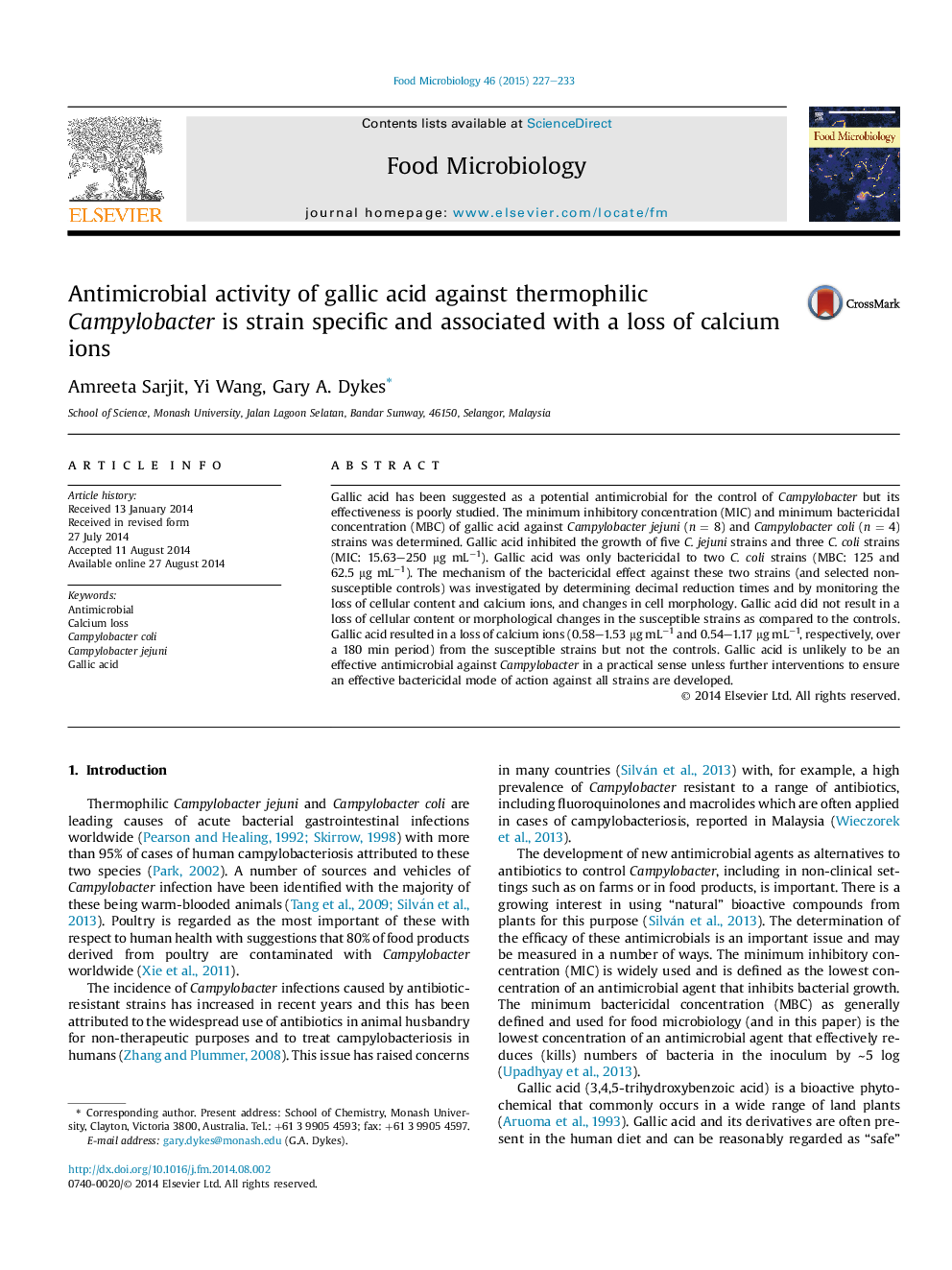| Article ID | Journal | Published Year | Pages | File Type |
|---|---|---|---|---|
| 6288546 | Food Microbiology | 2015 | 7 Pages |
â¢We investigated the antimicrobial action of gallic acid against Campylobacter.â¢Gallic acid inhibited the growth of 5/8 Campylobacter jejuni and 3/4 Campylobacter coli strains.â¢Gallic acid was only bactericidal against 2 of the C. coli.â¢The bactericidal mode of action was associated with calcium ion loss.â¢Gallic acid alone is unlikely to be effect for control of Campylobacter.
Gallic acid has been suggested as a potential antimicrobial for the control of Campylobacter but its effectiveness is poorly studied. The minimum inhibitory concentration (MIC) and minimum bactericidal concentration (MBC) of gallic acid against Campylobacter jejuni (n = 8) and Campylobacter coli (n = 4) strains was determined. Gallic acid inhibited the growth of five C. jejuni strains and three C. coli strains (MIC: 15.63-250 μg mLâ1). Gallic acid was only bactericidal to two C. coli strains (MBC: 125 and 62.5 μg mLâ1). The mechanism of the bactericidal effect against these two strains (and selected non-susceptible controls) was investigated by determining decimal reduction times and by monitoring the loss of cellular content and calcium ions, and changes in cell morphology. Gallic acid did not result in a loss of cellular content or morphological changes in the susceptible strains as compared to the controls. Gallic acid resulted in a loss of calcium ions (0.58-1.53 μg mLâ1 and 0.54-1.17 μg mLâ1, respectively, over a 180 min period) from the susceptible strains but not the controls. Gallic acid is unlikely to be an effective antimicrobial against Campylobacter in a practical sense unless further interventions to ensure an effective bactericidal mode of action against all strains are developed.
